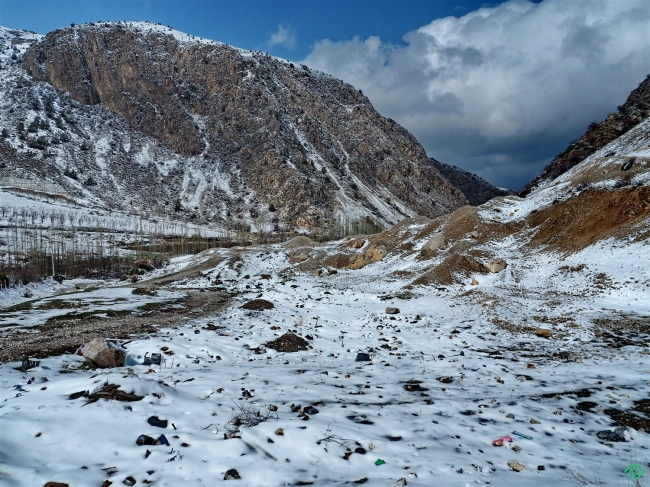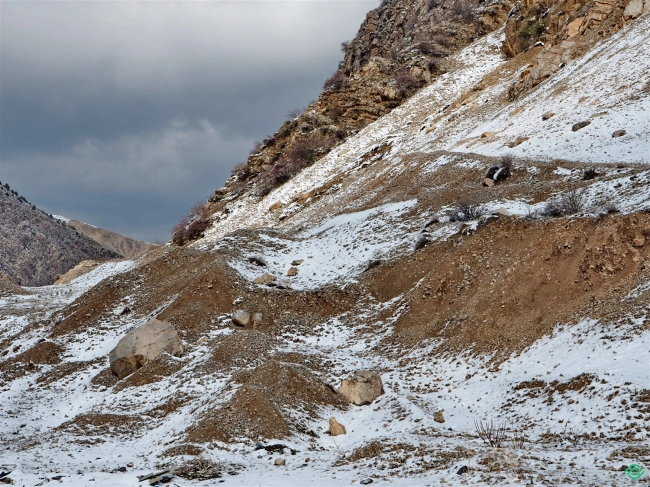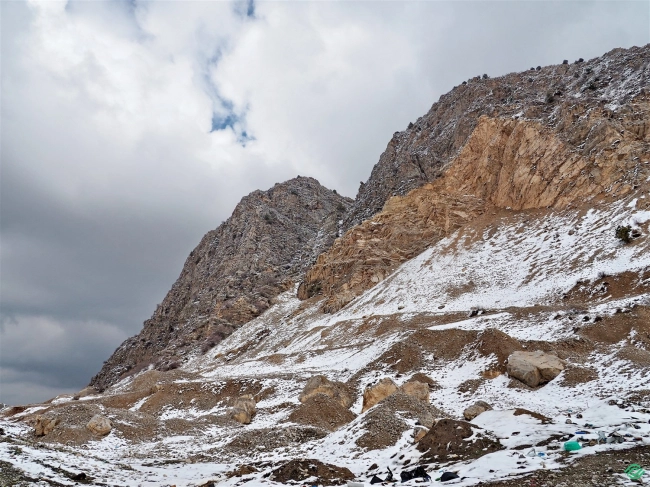Unauthorized mining. Violation of the soil layer leading to the formation of landslides.
39°44’8211″N 69°28’5861″E
In the Kökchö-Tuu mountains, unlicensed mining is taking place, where local residents use sand and gravel materials for their agricultural buildings or private homes. Unfortunately, there is no perfect methodology to accurately calculate the damage caused to the environment by unlicensed mining.
Meanwhile, significant areas of mining are always subject to manifestations of abrasion, abnormal accumulation, deflation, river (lateral) erosion, linear slope erosion, landslides, rockfalls, and processes of reshaping the shores of water bodies, karst processes, and linear slope (gully) erosion, which are conditioned by the geological structure of the territory and natural conditions.
The processes of mineral extraction cannot help but disrupt the original balance of the ecosystem, causing irreversible changes in the biosphere. Both underground and open-pit methods of developing solid mineral deposits significantly affect the gas, water, thermal, and geochemical regimes of the areas where the mining complex is located. In the underground mining method, there is a reduction of the rock mass towards the mined space, leading to the formation of cracks, ruptures, sinkholes, pits, and subsidence of the earth's surface. At great depths in the mining workings, rock bursts, emissions, and radiation of rocks occur, along with the release of methane, hydrogen sulfide, and other toxic gases, as well as sudden breakthroughs of groundwater. In the open-pit mining method, landslides, rockfalls, collapses, mudflows, and other exogenous geological processes develop.
These processes pollute the atmosphere, soil, and surface groundwater, causing damage and rendering the water basin and its ecosystem unfit, as well as negatively affecting plant and animal life, excluding significant areas of land from agricultural turnover, construction, and other types of economic activity.
In the Kökchö-Tuu mountains, unlicensed mining is taking place, where local residents use sand and gravel materials for their agricultural buildings or private homes. Unfortunately, there is no perfect methodology to accurately calculate the damage caused to the environment by unlicensed mining.
Meanwhile, significant areas of mining are always subject to manifestations of abrasion, abnormal accumulation, deflation, river (lateral) erosion, linear slope erosion, landslides, rockfalls, and processes of reshaping the shores of water bodies, karst processes, and linear slope (gully) erosion, which are conditioned by the geological structure of the territory and natural conditions.
The processes of mineral extraction cannot help but disrupt the original balance of the ecosystem, causing irreversible changes in the biosphere. Both underground and open-pit methods of developing solid mineral deposits significantly affect the gas, water, thermal, and geochemical regimes of the areas where the mining complex is located. In the underground mining method, there is a reduction of the rock mass towards the mined space, leading to the formation of cracks, ruptures, sinkholes, pits, and subsidence of the earth's surface. At great depths in the mining workings, rock bursts, emissions, and radiation of rocks occur, along with the release of methane, hydrogen sulfide, and other toxic gases, as well as sudden breakthroughs of groundwater. In the open-pit mining method, landslides, rockfalls, collapses, mudflows, and other exogenous geological processes develop.
These processes pollute the atmosphere, soil, and surface groundwater, causing damage and rendering the water basin and its ecosystem unfit, as well as negatively affecting plant and animal life, excluding significant areas of land from agricultural turnover, construction, and other types of economic activity.
























Attention: Information based on submitted complaints